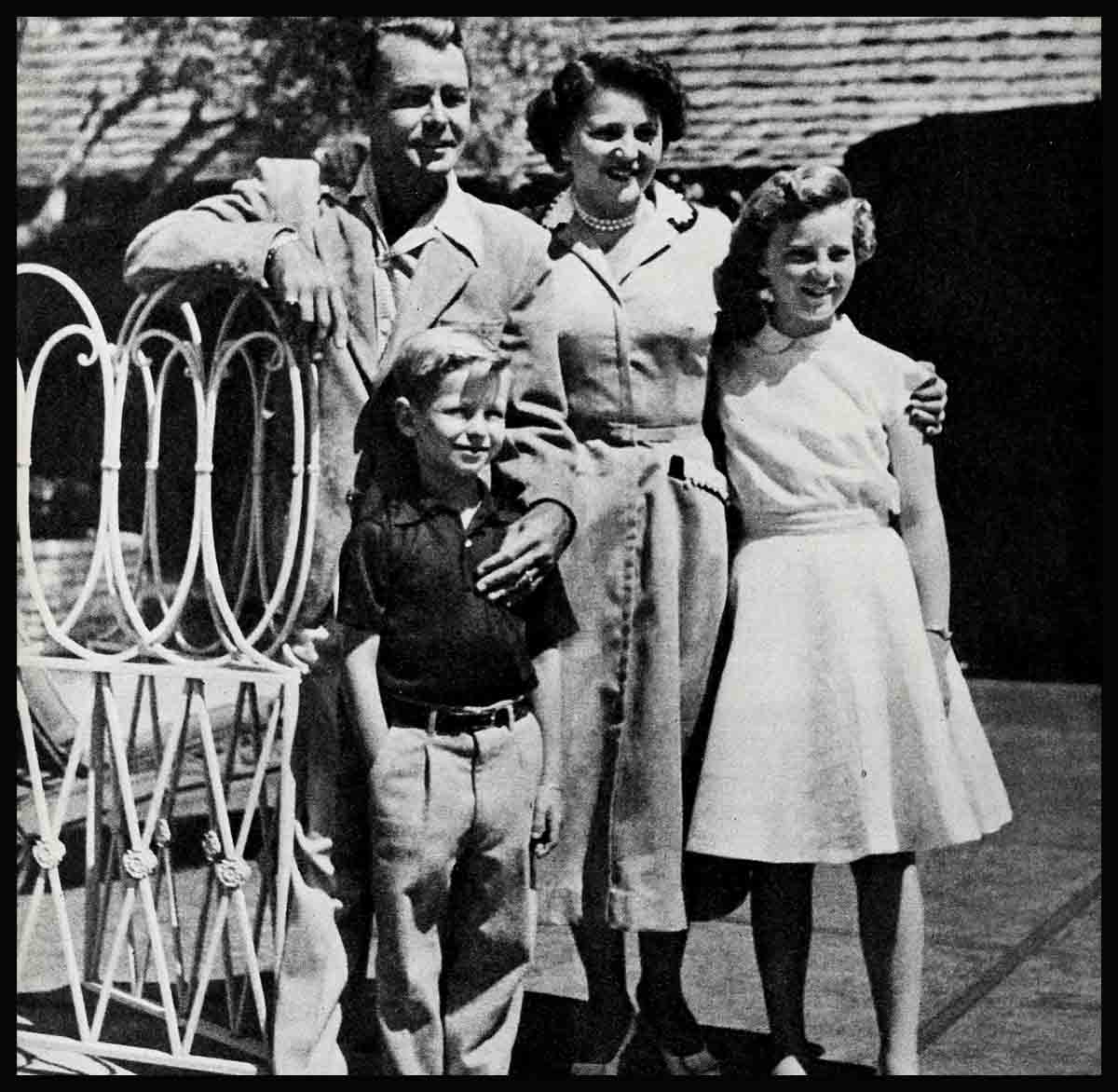
When The Roots Run Deep—Alan Ladd
The blond young man wandered restlessly away from the real-estate agent. He sauntered toward a knoll on the other side of the street. With feet planted firmly on the top of the hill, he gazed out at the hills around. He was standing on a spot that by its natural contours could never be crowded by other houses.
“Nobody,” he said thoughtfully, “will ever hurt us here.”
“Nobody,” agreed his wife, who had followed him. “It’s: lovely.”
“This is the place to build. I want this lot.” The young man turned to the agent. The bid he offered was a low one and yet the owner accepted it. The young man never knew why. It seemed like fate.
When the bulldozer started leveling part of the knoll for a homesite, it was the tangible realization of a dream many years old. A dream talked over at many a late-at-night session. The planners were Alan and Sue Ladd. But they could have been any young couple. For love of home we all understand. The castle in the air where the closets will be exactly right, where windows will be large, numerous and conveniently located. Where every need of that particular family will be met.
When such a goal is ahead, saving more and doing without unnecessary things becomes a stimulant instead of a stumbling block. The dream castle slowly progresses from scribbled notes to architect’s plans. Finally, the ground is broken. A family is putting down roots.
For Alan and Sue, the day building started on their home was a confirmation of their own love for each other. Different as they are in temperament, these two have learned to ‘merge their weaknesses and strengths and have made together a strong single entity which neither could have created alone.
“The most important thing in marriage to us is the togetherness in everything,” Alan explained seriously. “We share all things. We work together, play together and plan together. Sue and I are a team. That’s the way we like it. Maybe this sort of closeness wouldn’t work for other couples, but it’s the answer for us.
“With all our common interests, Sue and I are nevertheless completely different in make-up. She is impulsive and will gamble. I won’t. With me it’s pay cash or nothing. I am a worrier and Sue is an optimist. We both realize that my feelings of insecurity date from depression days. It was a rough, tough time for a lot of youngsters and I was no exception.
Alan Ladd today is a man who faces the inner struggle of accepting himself as he is. He en in God, and knows that through prayer he may conquer problems. And this same faith is a strong part of the marriage of Sue and Alan. They have instilled faith in their children. Trying to give them a deeper sense of security than Alan himself has ever known, he still struggles to keep them in true balance.
“We want home to mean a spiritual, emotional and physical security to the kids,” Alan said thoughtfully. “A nucleus for everything. We have large portraits of them over the mantel in the living room. When they grow up, we’d like to have them look back and remember that. We want home to be a place where they will want to bring their friends.
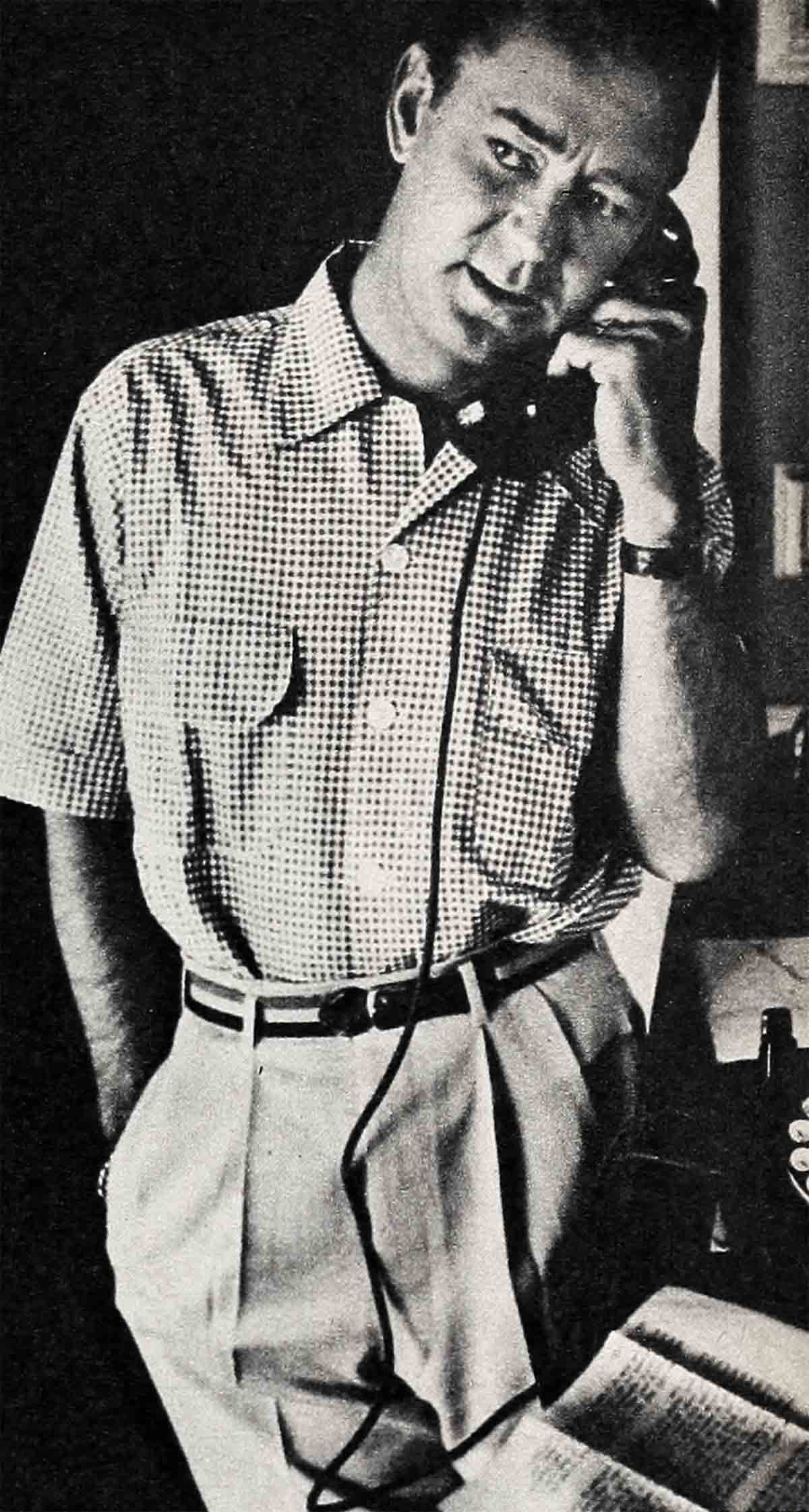
“When I was very young and very poor,” Alan went on, “I knew a boy whose father was very wealthy. When we went to his house the icebox was always full of wonderful things to eat. We were welcome to anything there. I’d like to create that same feeling for the kids. Each of them is different, but we’re trying to give them the same sense of values. Carol Lee, of course, has already charted her course. She is going to marry Dick Anderson, a fine young actor under contract at M-G-M Studios. Young Lonnie is shy and sensitive. She’s at a stage where she loves to do everything the same way Carol Lee does. Laddie is quiet and athletic. David is the family comedian. But we love them all for their own wonderful ways.
“All of our children are pretty level-headed about the movie business, too,” Alan added. “They’ve grown up hearing about movies from morning to night. So they accept the fact that movies and movie-making are a business. I have no objection to the children being photographed as some stars do. They behave beautifully. Sue and I have worked it out like a competition. Each child tries to be the most cooperative and obey the photographer’s instructions fastest. The picture-taking routine is simply a part of Daddy’s business. They have no illusions about it.
“When David and Lonnie went to Europe with us in 1953 their studies continued. David was six and Lonnie was ten. We took a fine tutor with us, and no matter where we were the kids studied until two o’clock. Quite often they worked away in the back of a car while we traveled. During those times they were not criticized for any bum penmanship,” Alan grinned. “They learned so much with the individual instruction, they could have jumped two grades when we got back home. Sue and I felt that academically it might be fine, but socially it was a pretty fast jump. So they’re still with their own age group.”
Alan and Sue’s love and concern for their children reaches into the future, too. Their new corporation—which will produce radio and television shows and motion pictures—has been carefully planned so that the children have shares in it. These little stockholders may eventually run the corporation. This new venture in producing is again a joint effort for the Ladds—typical of their magnificent team-work. They discussed, planned and dreamed until the project became real.
“Our whole life is an open book,” Alan pointed out, “and when you live openly you live honestly. I can’t stand dishonesty in any form. I don’t see how a marriage could survive that. Sue and I are completely honest with one another . . . with one exception. She will hide a bad review from me if she sees it first. When I say honesty, I don’t mean to the point of cruelty. Sue would never intentionally hurt me any more than I would hurt her. We have no secrets from each other—and no need for being alone.
“Dishonesty sometimes takes the form of not talking out things you disagree on. Sue and I don’t do this. When we disagree we start talking. We work out our own differences. We don’t take our troubles to anybody else. We know confiding in anyone else can be like asking for a judge and jury rolled into one.”
In a marriage so companionable, Alan and Sue’s faults and foibles long ago were relegated to their proper place. They have found that a sense a humor and the ability to laugh at or with each other is mighty important. They tease each other for faults and find praise for virtues.
“Sue has the amazing ability to keep seventeen thousand things on her mind at the same time,” says Alan. “And what’s more, she follows through. No detail is too small to be completed. Except at work, I’m likely to quit when it comes to details. The daily dozens of little things that have to be done, Sue manages effortlessly. They leave me exhausted. On the other hand,” Alan grinned, “my superhuman dynamo has turned me into a part-time retriever. I spend a lot of time chasing down her earrings. Sue has a maddening habit of taking off one earring while she’s talking on the phone, then she goes blithely on her way forgetting where she left it. So I hunt.
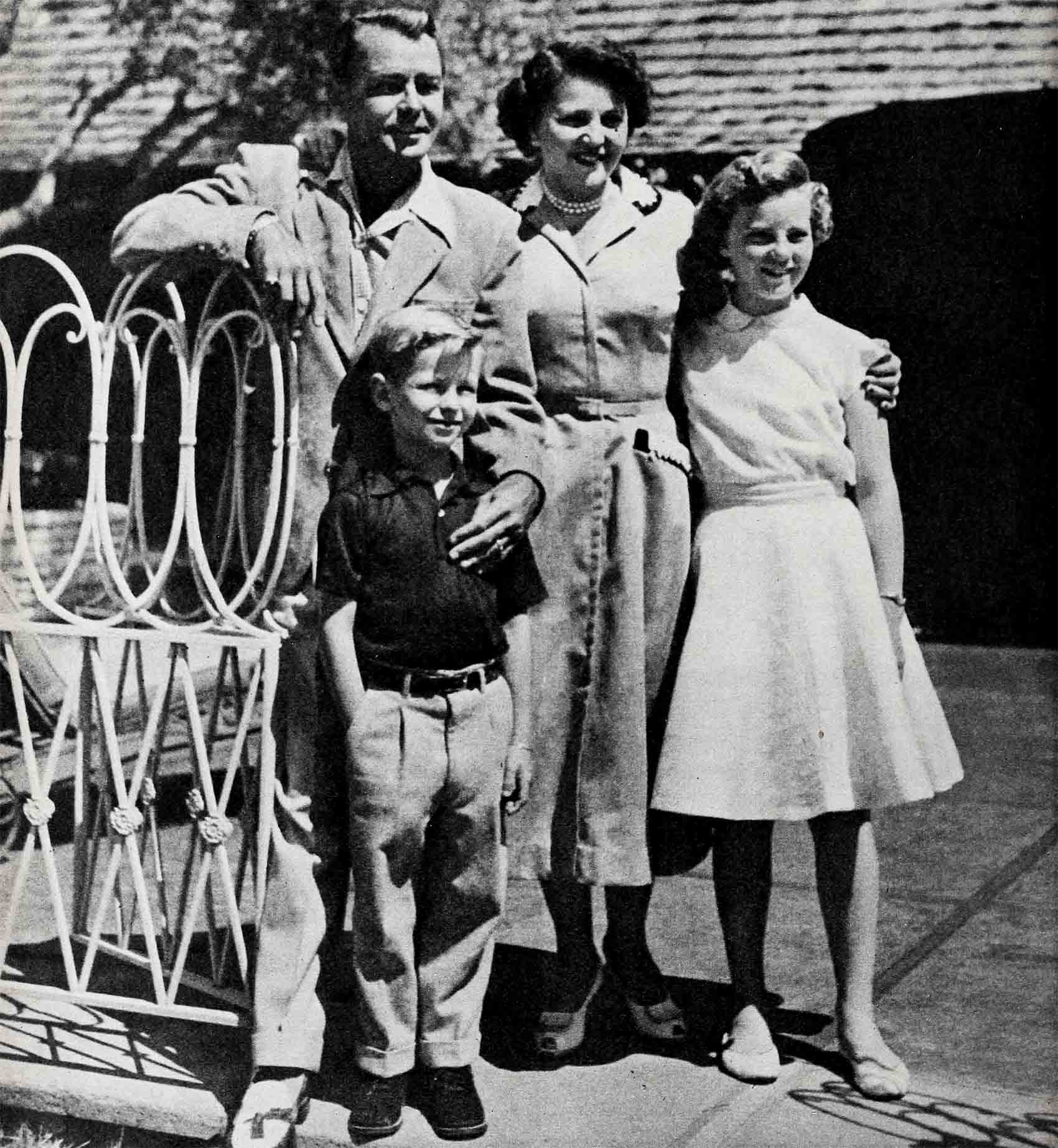
“Her forgetfulness is trivial compared to my worst habit—changing my mind. As Sue manages everything from home to business, leaving me free to go to the studio, we make our decisions at night. Say we’re discussing some project that involves someone else. Finally we’ll decide and I’ll say, ‘You call vend up in the morning and tell him it won’t work.’ The first thing in the morning, Sue will get on the phone and get rid of the unpleasant duty. When she comes in to tell me about it, I’m likely to look at her in amazement and say, ‘What did you do that for?’ It drives her nuts.”
Sue is a warmhearted generous woman and loves to buy things for others. She spends months getting just the right gifts for everyone on their Christmas list—and it’s a long one. One friend said in awe, “She gets the exact size and perfect fit for every shirt, sweater or pair of gloves. I don’t know how she does it.” Alan is delighted with Sue’s generosity and feels that they have received so much that they have a double joy in giving.
“The trouble with Sue is, she’ll buy for everyone but herself,” Alan says. “And the only way I can buy anything for her and make her keep it is to have it monogrammed so she can’t return it. I have a terrible time talking her into going into town to buy herself some dresses. And when she finally does go shopping, she’s just as likely to end up spending five hours shopping for the youngsters and getting nothing for herself.”
One secret to this happy marriage is the obvious selfless sharing that has become almost automatic with them. They reach conclusions jointly, satisfied with the deep contentment they have in each other. As Alan puts it, “Who cares who wins? You’re spending your whole life together.”
Both the Ladds are tender and sentimental people. Happy themselves, they have engineered many happy marriages among friends, who had only one fault in the eyes of the Ladds . . . they were single. They yearn to see all their friends with the same deep sense of fulfillment they have.
This sense for marriage and home was, of course, the reason Alan so desired to build for Sue and the children the perfect home. And he did. It was the ranch, Alsulana Acres. The first piece of property Alan ever owned in his life. It was a turning point. Looking out on the rich acres of Hidden Valley and knowing they belonged to him, brought to Alan the confidence and belief in himself that he so much needed. The ranch, the stables, the rolling acres were the tangible proof of security. The ranch took eight years to build, but the dream became a reality.
“We wanted the house to flow,” Alan says. “We wanted it to have a natural flow from room to room and right out doors. We wanted the sliding glass doors of the living room to give an unobstructed free sweep through the patio across the pool and right into nature’s backyard. So we decided against a bathhouse and barbecue by the pool. That would have broken the line. Instead we put the playroom at the end of the house nearest the pool with the barbecue and dressing-room facilities inside. We kept tightening our plans so they would suit the needs of our family, and yet, in deference to my caution, the house was planned so it would be saleable on the market, in case.
“Sue used a lot of originality in the house. She’s always had a wonderful gift for decorating. One very practical idea she used was to put fabric on the walls instead of wallpaper. I will admit, I sparked that idea by asking her how murals stayed so well preserved for centuries. She began to wonder why, too. And we ended up with fabric wallcoverings. They’re very practical and effective.
“I decided to have built-in pictures, too. So we mapped out picture areas between the studdings which are about two feet apart. The carpenters left a square cut out about six inches deep where we marked the plans. Then we built in our pictures with a background painting and foreground figures, and ended up with a three-dimensional effect on the wall. We like it.”
And to anyone who sees it, the Ladds’ home embodies the very spirit of their marriage. It is a strong place, constructed with love and care, emanating charm and grace, built solidly on a rock of faith and happiness. Running through the graceful rooms is a feeling of peace and warmth.
And yet, the beautiful house is only a middle-mark in the career of Alan and Sue. Alan is in the prime of his success. He will unquestionably reach new summits, attain greater glories. And wisely, they have found a new enthusiasm to take the place of the interest they expended on the home now finished.
They expect to concentrate now and in future on their new project, the production company. It will be new to them. They look on it as a chance to learn new and exciting things. They hope through it to be able to help others, create new talents and dream new dreams together.
So we give you the Ladds—a happy couple—whose love story never ends.
THE END
It is a quote. PHOTOPLAY MAGAZINE JANUARY 1955


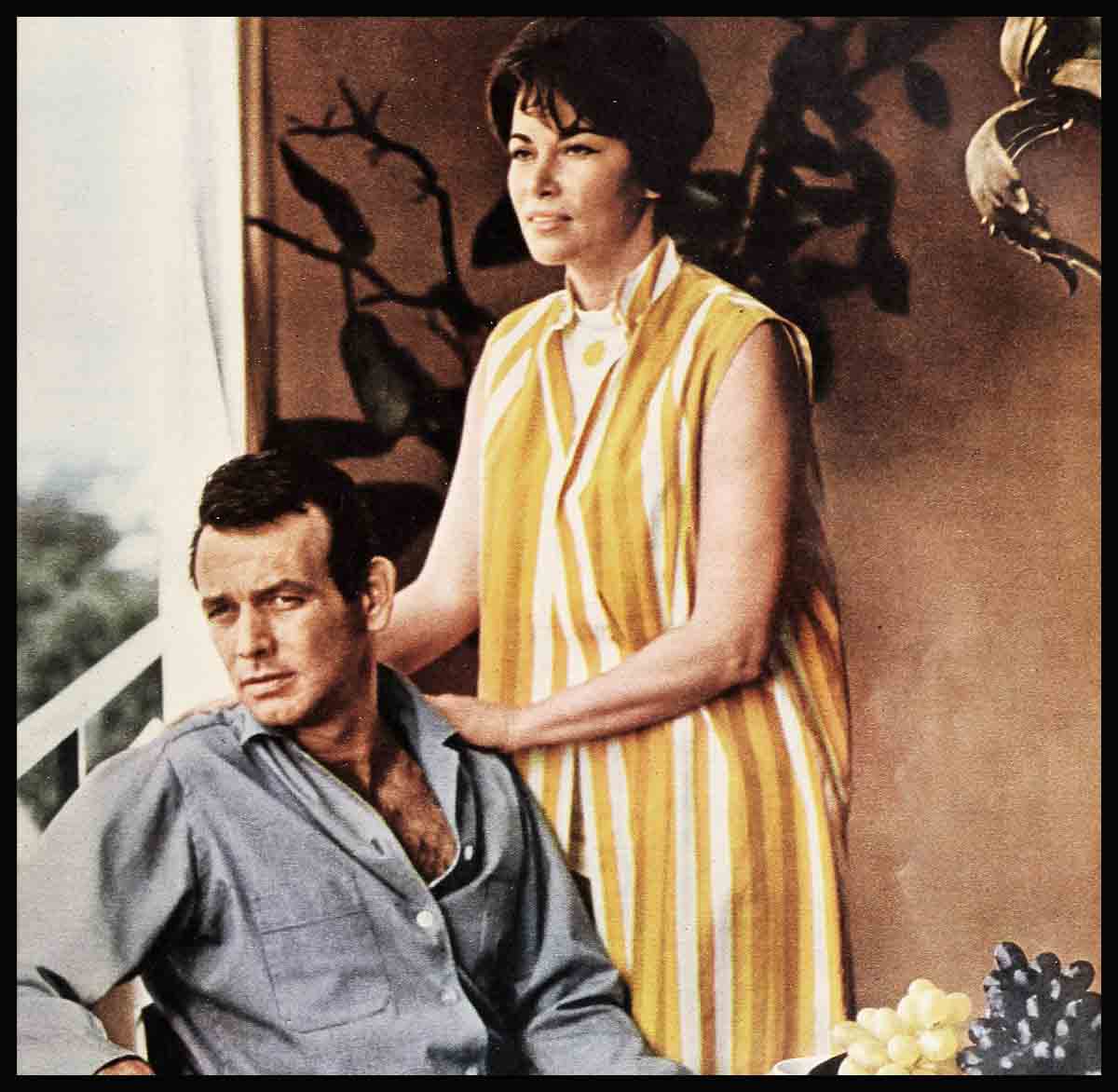

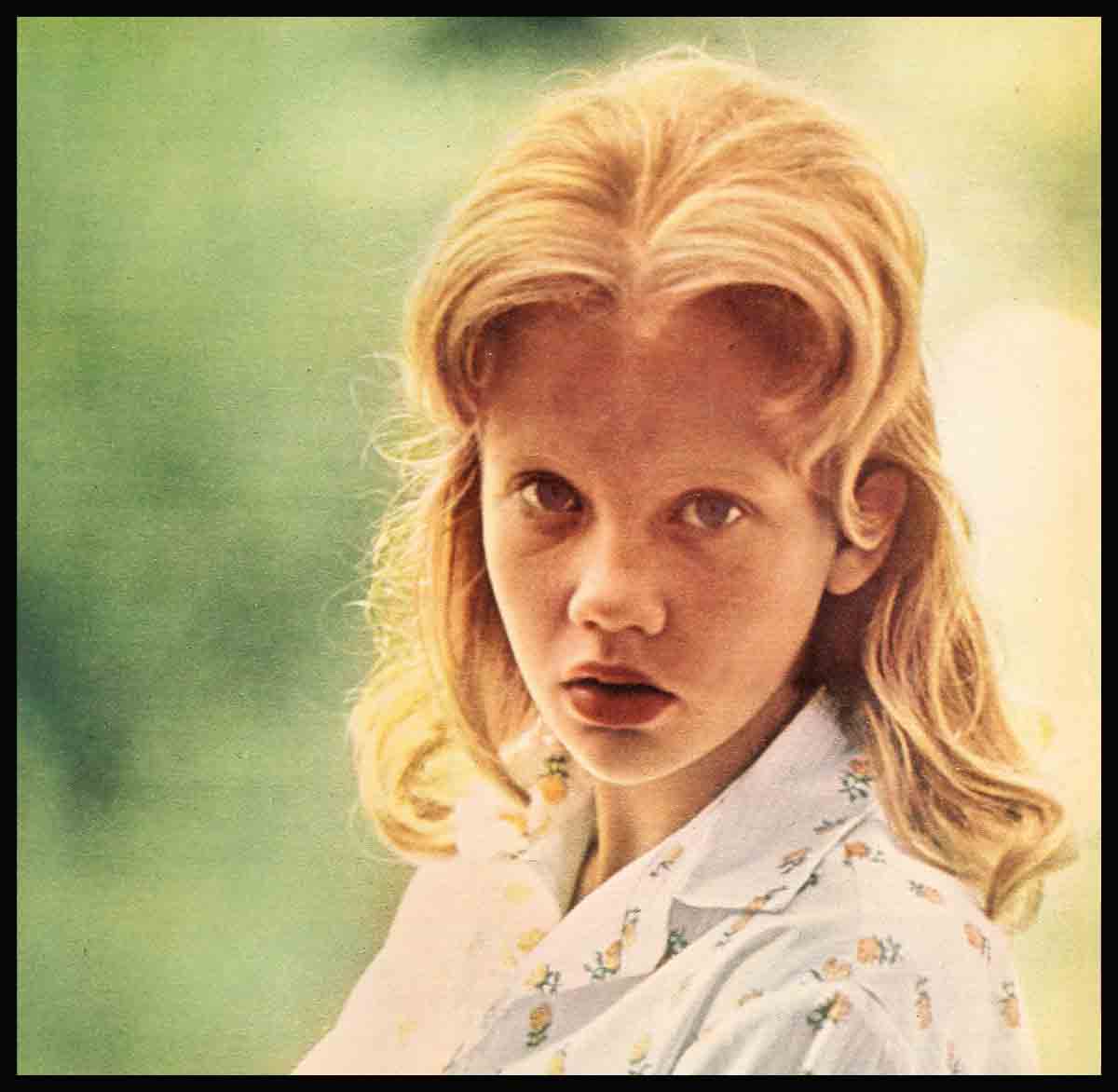
No Comments